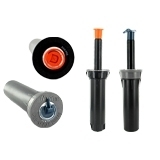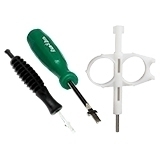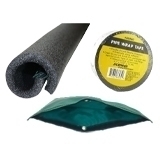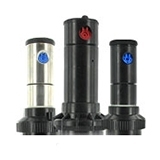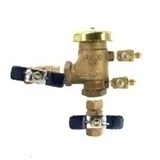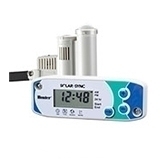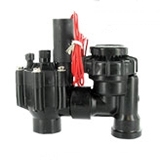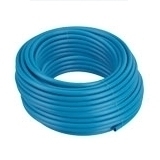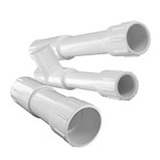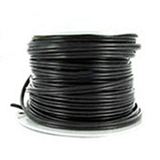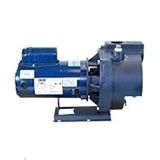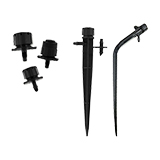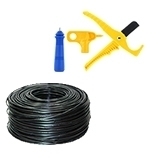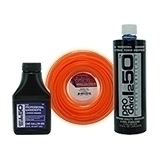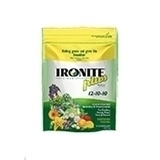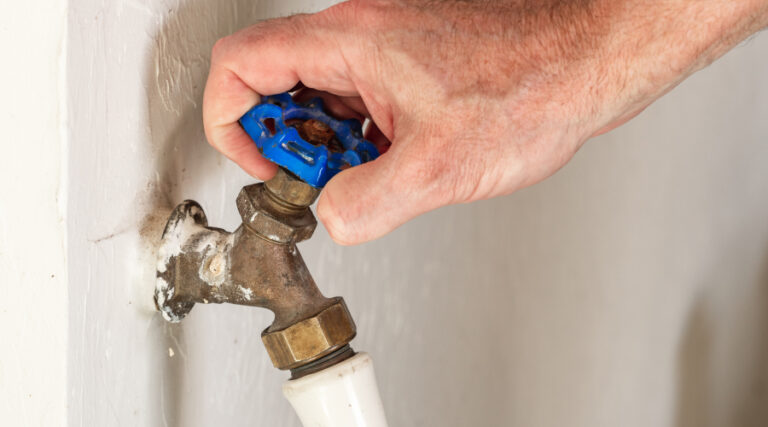Solutions To Common Irrigation Problems
This article discusses 11 common irrigation errors by the owner of David Wickham & Associates, Inc., Lake Mary, Florida. Every landscape and/or irrigation professional truly believes that they know what they are doing when it comes to designing, installing, and maintaining irrigation systems. However, virtually any of these professionals have gaps in their irrigation training and knowledge. In fact, some people simply never learned the proper way, to begin with. As a result, they can end up creating more problems by their ignorance than they solve.
Mistakes And Problems:
These are the most common irrigation mistakes I have seen repeatedly during the last 30 years. These 11 mistakes and problems are generally simple and inexpensive to correct. Also, if you can correct these flaws within an existing irrigation system, you can save your clients 10 to 50 percent of their current operating costs to irrigate their landscape.
1. Common Irrigation Error: Keep Irrigation Heads Of The Same Type Within The Same Zone
Never put different types of irrigation heads on the same irrigation zone to operate at the same time. The precipitation and/or application rates of the nozzles and emitters of the rotor, spray, bubbler, drip, micro-irrigation, etc. are entirely different. Consider the following:
- The nozzles for rotor heads generally have somewhere between 0.10 and 0.25 IPH (inches per hour) precipitation rates.
- Spray heads generally have somewhere between 1.35 and 2.15 IPH precipitation rates.
- The nozzles for bubbler heads generally have somewhere between 2.50 and 20.00 IPH precipitation rates.
- The emitters for drip/micro irrigation generally have somewhere between 0.25 and 1.50 IPH precipitation rates.
Thus, if you place a lower IPH head (let’s say one rotor head at 0.20 IPH) on a zone of higher IPH heads (let’s say all of the spray heads are at 1.60 IPH), then you have created a dry spot in the area watered by the zone. This means that you will have to run this irrigation zone longer to apply enough water in the dry (rotor) spot. This also means that you are wasting money on all of the additional water being applied by spray heads. [In this example, eight times (1.60 divided by 0.20) the amount of water and money necessary are wasted.]
2. Common Irrigation Error: The Running Times Of Different Types Of Zones Should Vary At The Controller
The running times of different types of irrigation zones (rotor, spray, drip, micro, etc.) should be set at different amounts of time at the controller. Just taking a quick look at the general precipitation rates for the different types of irrigation heads above should give you the idea that zone operating/running times definitely need to be different. For example, an irrigation zone of 0.20 IPH heads will obviously need to run longer than an irrigation zone of 1.60 IPH heads.
How To Get The General Running Time:
There is really no mystery in figuring out the general operating/running times for any type of irrigation zone.
- Simply find out what the irrigation manufacturer indicates is the specific precipitation rate in IPH from their own catalog, or figure out the average IPH precipitation rate in a zone if necessary.
- Then divide this specific or average IPH precipitation rate by what is considered the generally accepted amount of irrigation water, in inches, that needs to be applied per week to maintain healthy plant material growth in your area.
If you don’t know this amount per week in inches, contact your local county extension service. They should have a good idea for your area. Still, in many parts of the U.S., the old rule of thumb of 1 inch of water a week is still used.
- Take the number you get after you divide the zone precipitation rate by your locally accepted amount per week, and multiply it by 60. (For example, 0.20 IPH divided by 1 inch a week = 5, then take 5 times 60 = 300 minutes.) This will give you the total minutes per week that you need to operate/run that irrigation zone to apply your locally accepted amount of water.
- Now, divide this number of minutes per week by the number of days per week you want to irrigate to get your beginning daily operating/running time. (Again for this example: 300 minutes divided by 4 days per week = 75 minutes a day.)
- Now all you have to do is adjust this daily zone operating/running time for your site’s specific soil, seasonal evaporation and transpiration rates, etc.
3. Common Irrigation Error: Always Use Head-To-Head Coverage
All spray and rotor irrigation head zones should always have head-to-head coverage. This means just what it says. The number of feet the manufacturer says is the maximum throwing distance of (10 feet, 15 feet, 25 feet, 35 feet, etc.) for that nozzle at your working pressure is the maximum distance between heads/nozzles in your rotor or spray irrigation zone or system. You cannot get away with using a greater distance between heads to save your design, installation, operation, or maintenance costs.

Click Here to read more about how to space rotors and sprays.
4. Common Irrigation Error: Follow Throwing Distance Instructions
The fourth most common irrigation error is not following the directions. Never adjust or reduce the throwing distance of any spray or rotor nozzle by more than 25 percent of the manufacturer’s published/established throwing distance. If a contractor or maintenance person does this, then the manufacturer has the legal right not to stand behind or warranty the installation and use of their spray head or rotor. This violates the manufacturer’s published specifications. This adjustment will also produce an uneven precipitation/application of water and can waste more water and money in just one year than it would cost to replace a spray or rotor body and nozzle with the correct one(s).
5. Common Irrigation Error: Match Precipitation Rate With Rotor Zone & Nozzles
Replace incorrectly matched precipitation/application rate rotor nozzles within a rotor zone with the properly matched nozzles. Most so-called landscape and irrigation professionals incorrectly assume that to water an entire area evenly with rotor heads they should use the same gallon per minute (GPM) nozzles in every rotor head. This is a big mistake. Why do you think irrigation manufacturers make all of those different GPM nozzles?
You can save between 10 and 40 percent of the water used in a rotor irrigation zone by proportionally matching the precipitation/application rate of the rotor nozzles. For example, a rotor only covering a 1/3 circle should have a nozzle installed in it that is roughly applying 1/3 of the GPM that the nozzle in a full circle rotor in the same zone is applying.
6. Common Irrigation Error: In Spray Zones, Use The Correct Spray Nozzle Patterns For The Area You Are Watering
Another common irrigation error is not using the correct spray patterns for the zone. Knowledgeable irrigation professionals only purchase and use the correct nozzle pattern. They also only use the correct distance spray nozzles that they need for the area. Using the incorrect pattern and throwing distance can waste both water and money.
7. Common Irrigation Error: Shrub And Planter Beds Should Always Be Irrigated Separately From Grassed Areas
I am sure your local water management district tells you to irrigate grass areas separately from your shrub/ planter beds. They are correct. Virtually all of your common local landscape plant materials have larger root systems than your local grass. This means that your local landscape plant materials can g exist on half of the amount of water you are putting on your local grass.
8. Common Irrigation Error: Eliminate Or Reduce The Amount Of Over-spray Of Both Spray And Rotor Nozzles
The eighth most common irrigation error is wasting water with improper overspray design. When an irrigation designer installs a sprinkler head that throws water outside the landscaped area, they are wasting the water. This means that the water is being sprayed onto sidewalks, driveways, neighbors’ property, etc. The amount of water being wasted within the first year could average the amount of water in a hot tub.
9. Common Irrigation Error: Do Not Install Sprinkler Heads On PVC Vertical Risers
Eliminate the installation of sprinkler heads on PVC vertical risers within 6 feet of areas where people will be. The money you save by putting spray heads on PVC risers next to populated areas won’t offset your legal expenses if a person falls on one of these risers. If you think these types of accidents and lawsuits don’t happen, then you need to talk with your insurance company. Areas to avoid are sidewalks, driveways, pools, and backyard play areas.
10. Common Irrigation Error: Install Or Retrofit A Rain Shut Off Device On An Irrigation System
Another common irrigation error is improper installation. The proper installation and retrofitting of this device will prevent an irrigation system from running during a rainstorm. These simple devices generally pay for themselves in about one year. These rain shutoff devices can save between 3 and 15 percent of the annual operating expenses of a system. In many parts of the U.S., rain shutoff devices are required by law to be installed on all new irrigation systems with hefty penalties for not installing them.
Click here to learn more about how to install an irrigation spray or rotor
11. Common Irrigation Error: Never Run The Irrigation System During The Wrong Part Of The Day
The final most common irrigation error is not watering at the appropriate time of day. I know you and your client probably like to run/operate the irrigation system sometime during daylight hours so that you can see that it is functioning and find any irrigation problems. To me, this is about as logical as using a lighted match to find out how much gasoline there is in a gas tank.
Consider the following three problems associated with running/operating an irrigation system sometime during daylight hours:
A. Water Patterns Distorted By Wind
Every above-ground irrigation system (rotors, sprays, micro-sprays, etc.) has its watering patterns altered and/or distorted by wind, and when does the wind generally blow the most? During daylight hours.
B. People Don’t Appreciate Walking Through Over-Spray
The cost of running/operating virtually every irrigation system during daylight hours wastes water and money because the distorted patterns are throwing water (item 8 over-spraying, above) onto buildings, sidewalks, drives, etc. (Besides, how much business do you think your clients are losing when their clients have to walk through the overspray?)
C. Highest Water Evaporation Rates Are During The Day
The highest water evaporation rates for plant materials and grasses take place during the daylight hours. If you run/operate an irrigation system during the daylight hours, the water you apply doesn’t generally have enough time to soak into the root zone (or fall to the ground from the leaves) for the plant materials to utilize before it evaporates.
If you run/operate most irrigation systems in the first part of the early evening, then all the plant material goes to bed wet. Do you know how many plant material fungal, disease, freeze, etc. maintenance problems are created by plant materials going to bed wet? If you did, you would never irrigate in the early evening hours.
There are many other problems associated with irrigating during daylight hours besides the three mentioned above. However, just ponder the costs to your clients in the three above.
Operate During The Early Hours Of The Day
The best way to irrigate a project is to work out a run/operation window in the early dawn hours. This way water is not blown by the wind, it can seep into the ground before the high evaporation rate times, your client’s clients are not inconvenienced by watering, and your fungal, disease, etc., maintenance costs are reduced.
Conclusion
Throughout the U.S., I have seen the aforementioned 11 common mistakes made over and over and over again by the landscape and/or irrigation contractors. If you could correct these mistakes by educating your employees, you would be surprised at how much you can actually reduce the costs that you charge your clients, and how satisfied they end up being by correcting these common mistakes.



